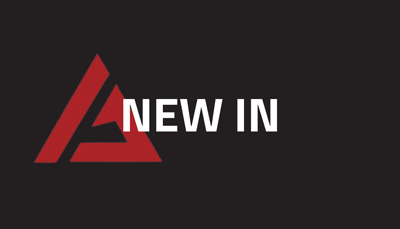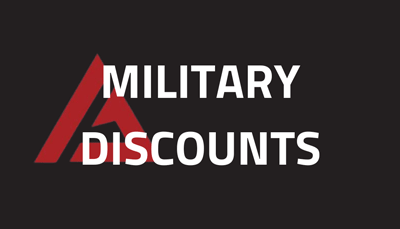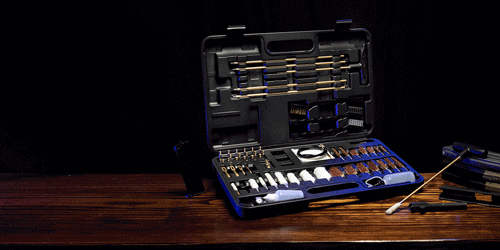How to choose the Right Tactical Vest
A tactical vest is a crucial piece of gear for anyone who needs to carry a variety of equipment, whether it's for military, law enforcement, or outdoor activities. With so many options available on the market, choosing the right tactical vest can be overwhelming. In this article, we'll break down the key factors to consider when selecting a tactical vest that meets your specific needs.
Determine Your Needs
Before you start shopping for a tactical vest, it's essential to determine what you'll be using it for. Consider the following factors:
Activity level:
Will you be engaging in high-intensity activities such as combat or search and rescue operations, or low-intensity activities such as training or airsoft?
If you're selecting a vest for life-or-death situations, your requirements will be vastly different from casual users. Prioritize a vest that offers exceptional durability, extended comfort during prolonged wear, and seamless radio compatibility. It should also provide reliable protection against both blunt force and bladed weapons. Additionally, consider opting for a vest with a built-in hydration pack reservoir for added convenience and endurance during critical missions.
Survivalists and security-conscious civilians represent a large segment of the tactical vest market. If you're looking to enhance your bug-out gear or carry essential supplies for quick access, a tactical vest could be an excellent choice. Weight distribution is often a top priority, so focus on vests made from durable yet lightweight materials. Insulated or waterproof vests can be lifesaving in harsh outdoor conditions, and a hydration pack reservoir is almost essential for long-term use in the field.
It's common to see sport shooters, airsoft and paintball enthusiasts, and even hunters wearing tactical vests. The specific features you’ll need will largely depend on your activity, but some general trends apply. Recreational shooters often favor modular vests with customizable pouches and attachments for flexibility. Material and color also play a key role — hunters, for example, tend to prefer lightweight, waterproof vests in camouflage or earth tones to blend into their environment.

Equipment requirements:
What type and quantity of gear do you need to carry? This will help you determine the number of pockets and compartments you need.
While cordless radio technology continues to advance, most police and military units still rely on corded radios for their superior range and battery life. However, this comes with added weight and the challenge of managing cables. Most cordless handheld radios can easily fit into a large pouch on standard vests, but corded radios require vests specifically designed to accommodate them. If you're using a corded radio, it's crucial to properly route the cables to keep them secure and out of the way. Exposed cables aren't just inconvenient—they can pose a safety risk by getting snagged or interfering with weapon access.
Environmental conditions:
Will you be operating in extreme temperatures, wet conditions, or rugged terrain?
A hydration pack compartment is a must-have for anyone wearing a vest regularly or over long durations. Most vests can accommodate 2- or 3-liter water reservoirs and include woven channels or straps to neatly secure the drinking tube, keeping it out of the way. Some models even feature insulated compartments to ensure your water stays cool during extended use.
Types of Tactical Vests
There are several types of tactical vests to choose from, each designed for specific purposes:
Tactical Vest vs Plate Carrier:
While both tactical vests and plate carriers are designed for tactical operations, they serve distinct purposes and offer different features. Here's a breakdown of the main differences:
Tactical Vest:
- Lightweight and versatile: Designed for everyday operations, tactical vests are often made of lightweight materials and offer a range of pockets and compartments for gear storage.
- No built-in armor: Tactical vests typically do not have built-in armor plates, relying on the user to add their own protection if needed.
- Focus on mobility: Tactical vests prioritize comfort and mobility, allowing users to move freely without restriction.
- General-purpose gear storage: Tactical vests often feature a variety of pockets for storing gear such as magazines, first aid kits, and communication devices.
Plate Carrier:
- Designed for ballistic protection: Plate carriers are specifically designed to hold ballistic plates, providing protection against rifle rounds and other high-velocity threats.
- Built-in armor compartments: Plate carriers have dedicated compartments for armor plates, ensuring they stay in place and provide optimal protection.
- Focus on protection: Plate carriers prioritize protection over mobility, often featuring a more rigid design to maintain the position of the armor plates.
- Specialized gear storage: Plate carriers typically have limited storage capacity, focusing on essentials like magazines, medical supplies, and communication devices.
Chest Rigs: A Tactical Solution for Minimalist Missions
A chest rig is a type of tactical gear that provides a minimalist approach to carrying essential equipment. Here's a breakdown of the chest rig's characteristics:
Key Features:
- Minimalist design: Chest rigs are designed to be lightweight and compact, carrying only the most essential gear.
- Focused on magazines and ammunition: Chest rigs typically feature magazine pouches and storage for ammunition, prioritizing reloads and fire power.
- Compact and adjustable: Chest rigs are designed to be adjustable, allowing users to customize the fit and position of the rig.
- Versatile and adaptable: Chest rigs can be used in various environments and situations, making them a versatile choice for tactical operations.
Benefits:
- Reduced weight: Chest rigs are designed to be lightweight, reducing the overall weight burden on the user.
- Improved mobility: The compact design of chest rigs allows for increased mobility and flexibility.
- Easy to use: Chest rigs are often simple to operate, with easy access to magazines and ammunition.
- Versatile: Chest rigs can be used in various situations, from combat to training, and can be easily integrated with other tactical gear.
Tactical Load-Bearing Vests: A Comprehensive Solution for Heavy-Duty Operations
Tactical load-bearing vests are designed to distribute the weight of heavy gear and equipment across the user's body, providing a comfortable and practical solution for extended operations. Here's a breakdown of the tactical load-bearing vest's characteristics:
Key Features:
- Load distribution: Tactical load-bearing vests are designed to distribute the weight of gear and equipment evenly across the user's body, reducing fatigue and discomfort.
- Multiple compartments: These vests feature multiple compartments and pockets for storing a wide range of gear, including ammunition, medical supplies, and communication devices.
- Modular design: Tactical load-bearing vests often have a modular design, allowing users to customize the layout and configuration to suit their specific needs.
- Durable construction: These vests are built to withstand heavy use and harsh environments, with durable materials and reinforced stitching.
Benefits:
- Reduced fatigue: Tactical load-bearing vests distribute the weight of gear and equipment, reducing fatigue and discomfort.
- Increased capacity: Tactical load-bearing vests provide ample storage for a wide range of gear and equipment.
- Customization: The modular design of these vests allows users to tailor the layout and configuration to their specific needs.
- Durability: Tactical load-bearing vests are built to withstand heavy use and harsh environments.
Common Uses:
- Extended operations: Tactical load-bearing vests are used in extended operations where users need to carry heavy gear and equipment for an extended period.
- Patrols: These vests are used in patrol situations where users need to carry a wide range of gear and equipment.
- Tactical missions: Tactical load-bearing vests are used in tactical missions where a high level of gear and equipment is required.
Key Features to Consider
When choosing a tactical vest, consider the following features:
Durable Material:
Look for durable, breathable materials such as nylon or polyester. Durability is key for any tactical vest. Nylon and canvas are top choices for toughness, though canvas is heavier and pricier. Sport shooters and hunters might prefer lighter options like taslan or poly/cotton blends, but note that poly/cotton tears more easily. Opt for metal buckles and clips, as plastic can break under impact. Ensure seams are double or triple-stitched, and if your vest has mesh, choose a durable material over cotton or poly-cotton blends
Gloryfire tactical vest is made of 1000D nylon. We provide a one-year warranty. If you encountered any quality issues regarding this weight vest, please contact us immediately and we will make every effort to resolve your issue until you are satisfied.
Weight & Load Balancing:
Lighter vests are ideal for extended operations, but may compromise on storage capacity. Weight distribution on your vest is crucial. Even a slight imbalance can lead to discomfort over time, and wearing an uneven vest regularly may cause chronic neck or shoulder pain. To avoid this, evenly distribute your gear as much as possible.
Sizing & Adjustability:
A vest that can be adjusted to fit different body types is essential for comfort and mobility. Choose vests with adjustable straps, buckles, and cummerbunds for a secure, personalized fit. Adjustability lets you strike the perfect balance between a snug fit and unrestricted movement, ensuring both comfort and functionality.
Gloryfire tactical vest comes with two stable side straps as well as adjustable padded shoulder straps. The weight vests are fully padded with breathable 3D mesh, which are comfortable and keep you cool by allowing air circulation.
A properly sized tactical vest should fit snugly, with slight compression around your torso. A vest that's too large won't secure your gear or provide adequate protection. Ensure the vest extends to the top of your pants, whether or not you plan to attach it to your belt.
Carrying Capacity:
When selecting a tactical vest, consider the carrying capacity and storage options that meet your specific needs. Evaluate the number and size of pouches, pockets, and compartments to ensure they can accommodate your essential gear, such as magazines, grenades, hydration systems, and communication devices. Additionally, consider the accessibility and organization of storage areas, as quick and convenient access to your equipment is vital during high-pressure situations. A well-designed vest with optimized storage and accessibility can enhance your performance, improve your response time, and increase your overall effectiveness in the field.

MOLLE (Modular Lightweight Load-carrying Equipment) Compatibility:
When selecting a tactical vest, consider the level of modularity that meets your needs, and if opting for a modular or semi-modular vest, choose a reliable attachment system such as MOLLE, TekLok, or ELS (Equipment Locking System), avoiding Velcro attachment points that can't hold gear securely in place. Additionally, whenever making significant changes to your modular vest, it's crucial to thoroughly retrain yourself to familiarize yourself with the new layout, ensuring you can access your gear quickly and efficiently in high-pressure situations, and avoiding the risk of being unfamiliar with your vest's layout in a life-or-death situation.
Gloryfire tactical vest features MOLLE webbing attachment points and optional personalization options, allowing for seamless integration of gear and customization to fit your needs.
Comfort& Breathability:
A comfortable vest can be a game-changer during prolonged operations, making it essential to prioritize comfort and breathability when selecting a tactical vest, look for vests that incorporate strategic padding and mesh panels to enhance comfort and regulate body temperature, preventing excessive sweating and discomfort, also consider vests with adjustable shoulder straps and waist belts to distribute the weight evenly and alleviate strain on the back and shoulders, ensuring a secure fit and preventing the vest from shifting during movement.
Gloryfire tactical vest is fully padded with breathable 3D mesh, which are comfortable and keep you cool by allowing air circulation.
Brand and Quality
When choosing a tactical vest, consider the reputation of the manufacturer and the quality of construction:
Brand Reputation: Look for brands with a proven track record of producing high-quality tactical gear.
Materials and Construction: Inspect the vest for sturdy stitching, reinforced seams, and durable materials.
Conclusion
Choosing the right tactical vest requires careful consideration of your needs, activity level, and equipment requirements. Remember to try before you buy, and don't compromise on quality – your safety and performance depend on it.
Also consider suggestions listed below:
- Try on different vests to ensure a comfortable fit.
- Read reviews from other users to get a sense of the vest's performance.
- Consider the warranty and customer support offered by the manufacturer.
- By following these guidelines, you'll be able to choose the right tactical vest for your needs and stay safe and effective in the field.
- Consider taking your tactical vest to a professional tailor to reinforce stress points, repair damaged areas, and add custom features, which can significantly extend the vest's lifespan and maintain its durability.











Comments
Sir , I am a very large man ! Have an extra large chest!! The biggest vest I can find is 47- 56 inch expansion! I am going to need one that is bigger in the 61- 65 inch range!! I want to be able to wear extra clothes underneath the vest! Camo color would be nice! Thank you for your help